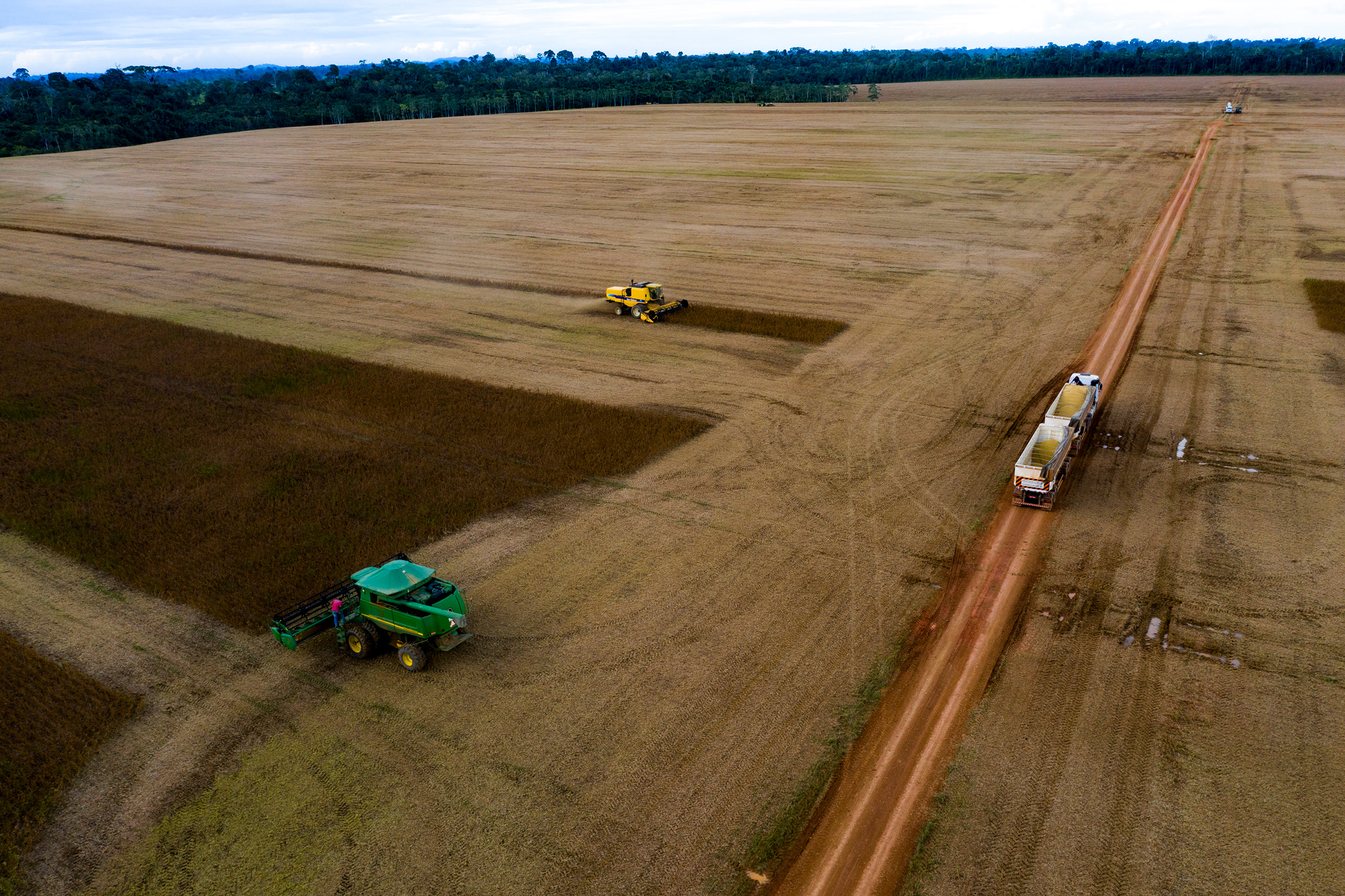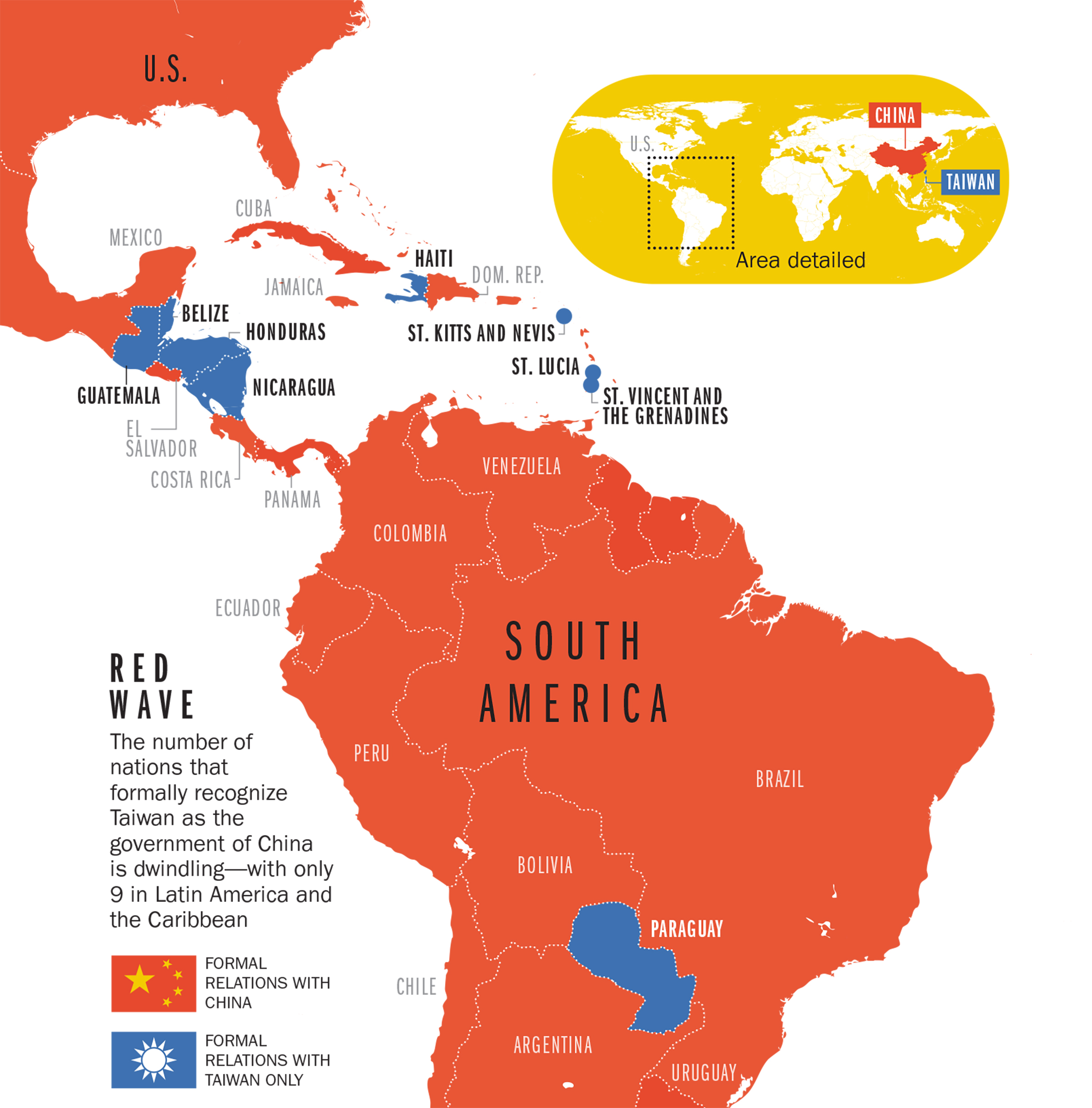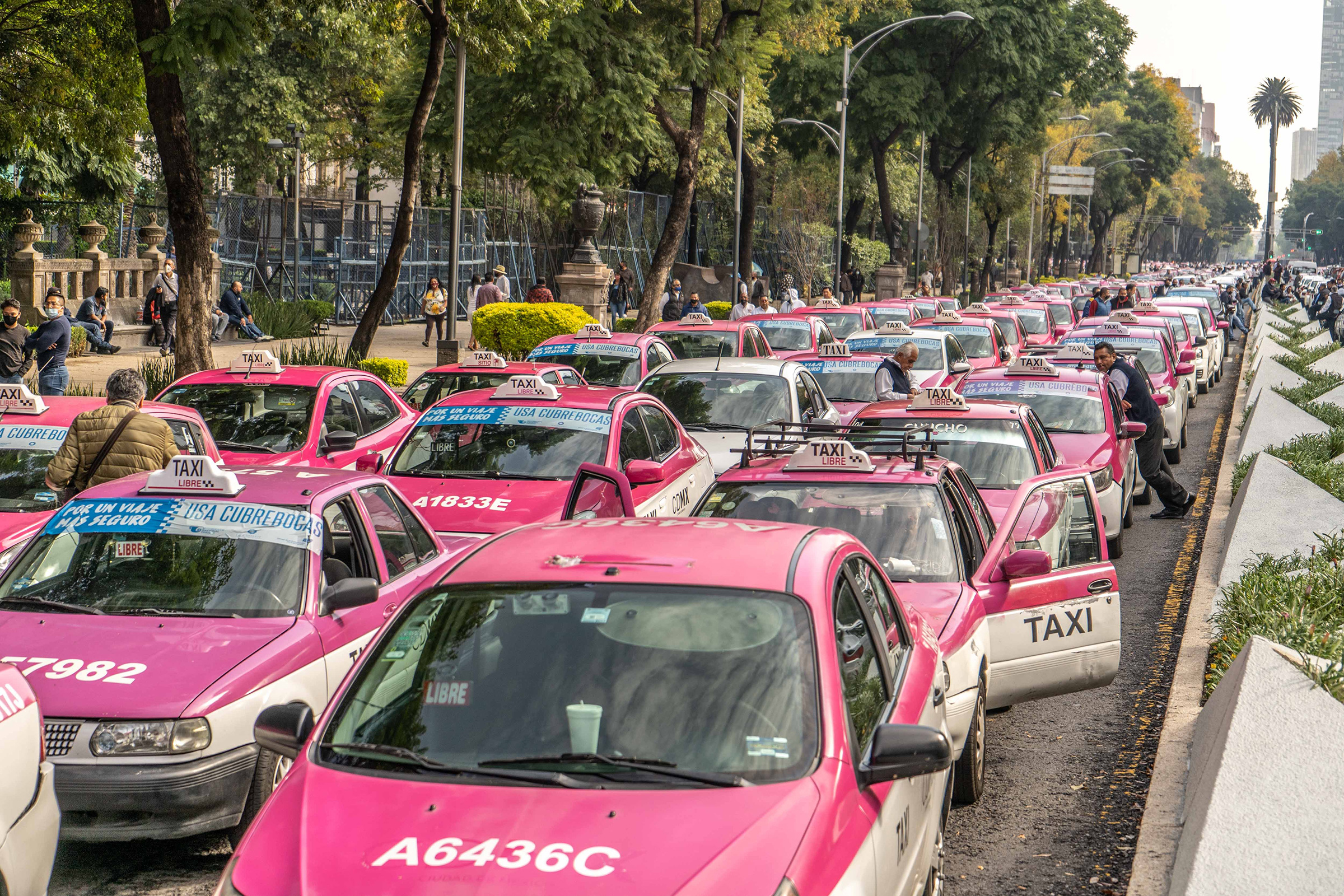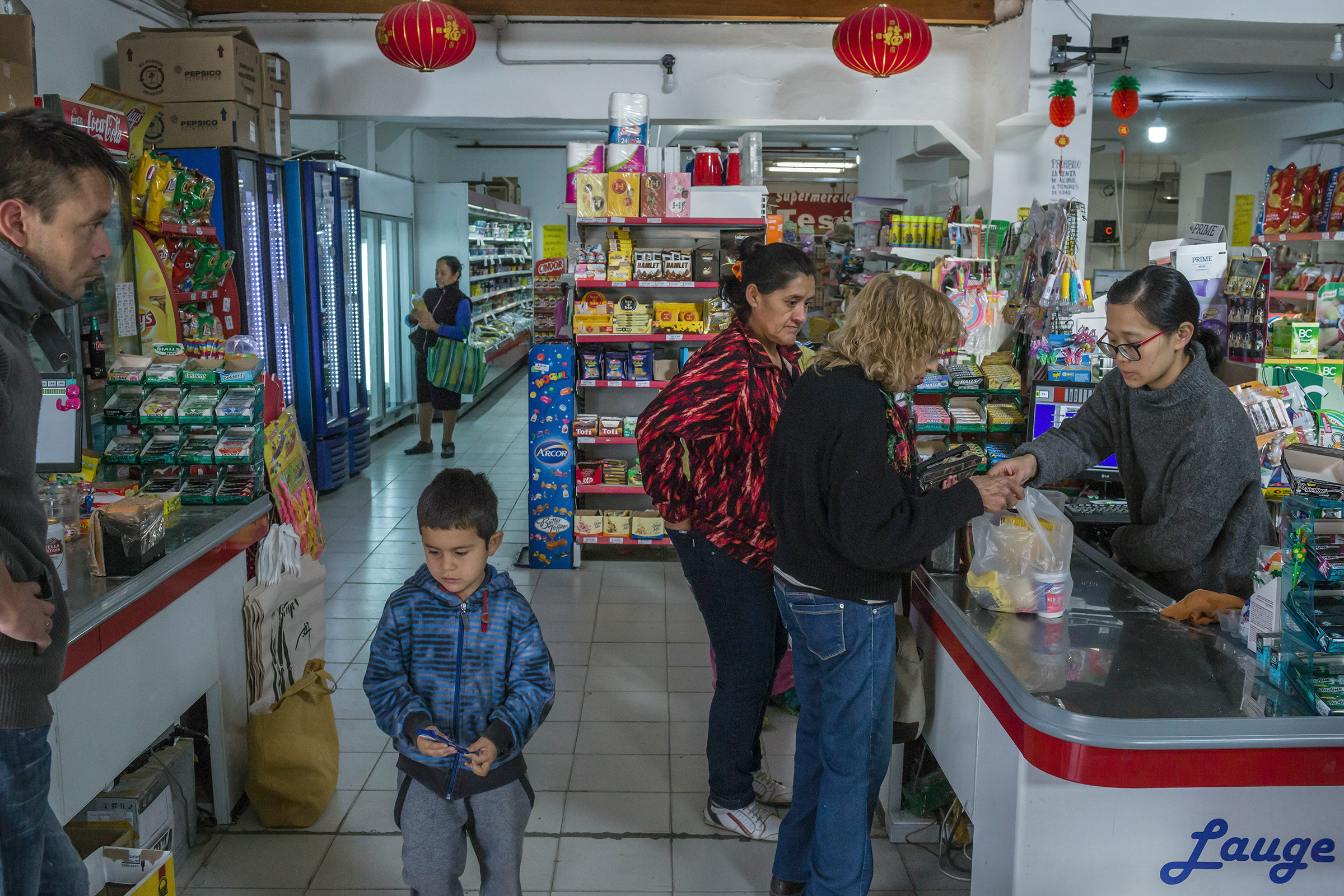Chinese Investment in Latin America Continues to Expand
When Alex Almeida surveys his family farm in a rural corner of landlocked Paraguay, he sees mainly fields, punctuated by small houses with sheet-metal roofs and, in the distance, native lapacho trees blooming with bright yellow flowers. But despite the isolation, there's only one place in the world the 23-year-old feels truly cut off from. Paraguayan exports of cows and sheep, like the 130 or so Almeida raises, are locked out of the second largest economy in the world, a source of frustration for an ambitious young farmer and student of agriculture. "The cell phone I'm speaking to you on now is from China," he tells TIME from Caaguazú, a town some 100 miles east of the capital, Asunción. "The shoes and clothes that I buy and wear, it all comes from China. So why can't we export food to China?"
The answer is that Paraguay is one of only 15 countries in the world–including nine in Latin America and the Caribbean–that still don't recognize the government in Beijing. In 1957, Paraguay's recently installed right-wing dictator Alfredo Stroessner recognized Taiwan–an island that politically split from the mainland following China's 1945–49 civil war, but which Beijing considers a breakaway province–as the "one true China." In response, China limits trade and diplomacy with Paraguay, just as it does with any country that recognizes Taiwan. "It's a political thing, and for many of us it's absurd, really," Almeida says. "Taiwan helps us a lot, sending donations and financing, but it doesn't serve us at a great scale."
In April 2020, as COVID-19 began to tear through Latin America, the leftist bloc in the Paraguayan Senate introduced a bill to open relations with Beijing–which would inevitably mean ending recognition of Taiwan. The Senators argued that the pandemic would make Chinese support–in the form of masks and ventilators, but also investment, trade and possibly a vaccine–crucial in the coming years. In the end, the proposal was voted down, 25 to 16, in a Senate still controlled by the right-wing party Stroessner founded. Still, opposition lawmakers have forged ahead in deepening their institutional ties with China, eliciting what they described as the first-ever Chinese humanitarian aid to Paraguay in June, and vowing to recognize the country if the balance of power in Congress shifts.
The political debate in Paraguay reflects a broader battle raging across Latin America about China's swelling influence. As countries in the region grapple with a cascade of challenges to their developing economies, they increasingly look not to the North but to the East. Today, China is South America's top trading partner. In 2019, Chinese companies invested $12.8 billion in Latin America, up 16.5% from 2018, concentrating on regional infrastructure such as ports, roads, dams and railways. Chinese purchases of minerals and agricultural commodities helped South America stave off the worst privations of the 2008 financial crisis.
And during COVID-19, Latin America is once again reliant on China, whose middle class drives demand for beef from Uruguay, copper from Chile, oil from Colombia and soya from Brazil. These are the commodities that will help Latin America weather the storm–and China will inevitably be the primary customer. "We'd rather not be so dependent on exports to China, but what is the alternative?" Paulo Estivallet, Brazil's ambassador to China, tells TIME. "It's just more profitable to sell here than anywhere else."

A soybean plantation in Rondonia, Brazil. The country exports 80% of its soybean crop to China
Sebastián Liste—NOOR for TIME
For China, the investment brings political returns. In the past four years, the Dominican Republic, El Salvador and Panama have each switched their recognition from Taiwan to China. Gaining these kinds of alliances in Latin America offers Beijing invaluable votes at the U.N. and backing for Chinese appointees to multinational institutions. It also empowers China to embed standard-setting technology companies like Huawei, ZTE, Dahua and Hikvision–all sanctioned by the U.S.–in regional infrastructure, allowing Beijing to dictate the rules of commerce for a generation.
Already, 19 governments across Latin America and the Caribbean have joined Xi Jinping's signature Belt and Road Initiative (BRI), a $1 trillion transcontinental trade and infrastructure network. Shanghai-based China Cosco Shipping is building a new $3 billion port at Chancay in Peru, while there are ambitious proposals for a transcontinental railway linking South America's Atlantic and Pacific coasts from Brazil to Chile.
COVID-19 presented another opportunity. By late October, China had provided over 179 billion masks, 1.73 billion protective suits and 543 million testing kits to 150 countries and seven international organizations around the globe. "The pandemic has opened up a diplomatic opportunity that China did not have before," says Benjamin N. Gedan, a former South America director on the White House's National Security Council, now with the Wilson Center. This has not gone unnoticed by Washington; the U.S. State Department's J-Bureau–charged with "elevating and integrating civilian security in U.S. foreign policy"–has been parsing China's mask diplomacy to decipher where Beijing is attempting to gain influence, sources involved tell TIME.
Globally, the lines of a new cold war are gaining definition: the U.S., Europe, India and Pacific allies on one side; China, Russia, Pakistan, Central and Southeast Asia on the other. It's not yet clear where the "silk curtain" will fall in Latin America. But Beijing's activity has Washington spooked. "China is a malign influence," a senior State Department official tells TIME on condition of anonymity. "This is part of the CCP's global plan to export Chinese ideals and bad practices beyond the Asia-Pacific," the official says, referring to the Chinese Communist Party. The question now–with a new occupant of the White House–is what the U.S. will do about it.

The U.S. has long been chary of interlopers in its southern neighborhood. In 1823, the Monroe Doctrine drew a red line regarding European influence in the western hemisphere, and for decades in the 20th century the U.S. fought the Cold War with Soviet Russia on the turf of Latin nations attracted to Marxism. But President Donald Trump viewed Latin America largely through a caustic lens of drug lords, immigrant caravans and gang violence. His sole visit to the region was the 2018 G-20 summit in Buenos Aires.
Now, with Joe Biden in the White House, the battle for influence is likely to flare up once again. As Vice President, Biden visited the region a record 16 times, and he personifies the "good neighbor" approach to the region crafted by FDR. Biden was Barack Obama's point person on initiatives to combat violence and drugs in Colombia, political corruption in Guatemala and more. "Joe Biden brings a deeper knowledge of Latin America and the Caribbean to the presidency than any U.S. leader since the end of the Cold War," says Michael Camilleri, director of the Peter D. Bell Rule of Law Program at the Inter-American Dialogue.
U.S. ties run deep across Latin America, but perhaps deeper in Panama, where the U.S. dominated commerce and politics throughout the 20th century, and which has emerged as a battleground in the superpower contest.
The country's namesake canal, through which trade flows between the Atlantic Ocean and the Pacific Ocean, was completed by the U.S. Army and controlled by Washington for almost the entire century. In the 1940s, the U.S. Department of Commerce helped set up a free-trade zone in Colón, a city near the canal's entrance. The Colón Free Trade Zone (ZLC) quickly became a gateway for American firms such as Gillette, Coca-Cola and Pfizer to enter the Latin American market.
Yet today, seven decades later, things have changed in the ZLC. Across its 1,000-hectare sprawl of ports, warehouses and offices, Chinese companies dominate. "China accounts for the largest share of imports that come into the zone, 40% of the total," says Giovanni Ferrari, manager of the zone. Ferrari says the surge of Chinese products began around 2010, and he expects it to grow as China seeks to boost its trade with the rest of the world in the wake of the pandemic. "China has identified the potential of Panama and [the ZLC] as a reference point for distribution."
China's growing commercial presence in the ZLC reflects the enthusiasm it has long had for Panama, which remains a strategic linchpin for Washington. In 2017, China Landbridge Group broke ground on a new $1 billion deepwater port and logistics complex on Panama's Margarita Island, where the Panama Colón Container Port will take over land once occupied by a U.S. military base. Less than a week after work began, the government of Panama suddenly switched diplomatic recognition from Taipei to Beijing, blindsiding–and infuriating–its Washington allies.
"The United States created Panama and then built one of the engineering wonders of the world and gave it to the Panamanians," says Thomas Shannon, former Under Secretary of State for Political Affairs from 2016 to 2018 and briefly Acting Secretary of State early in the Trump Administration. "One would hope that was a level of a relationship that allowed them to have a conversation with us to try to understand our point of view. But that didn't happen."
The U.S. may have "built" the Panama Canal, but Chinese migrant labor helped hew the 51-mile marvel of engineering from the earth, bestowing Panama with a significant ethnic-Chinese population and opportunities for CCP engagement. Even before the 2017 diplomatic switch, "Panama featured very prominently in Ministry of Commerce and other documents [produced by China] to guide Chinese companies to the region," says Margaret Myers, director of the Asia and Latin America Program at the Inter-American Dialogue.
After 2017, there was a surge in Chinese investment and commercial deals in Panama amid a visit by Xi, with some 16 significant deals put on the table, including grand infrastructure projects. Eddie Tapiero, a Panamanian economist who worked on the negotiating team for the Panama-China free-trade agreement (FTA), says the aim was to leverage Panama's strategic position to boost regional trade. If they could persuade the large Neopanamax boats that deliver goods from China to the U.S. to pass back through the Panama Canal–which can cost $1 million to traverse–instead of taking cheaper return routes via Europe while empty, they could assemble exports from across the continent in large quantities for dispatch to China. "We saw a big opportunity," says Tapiero. "All that created a lot of enthusiasm, and we advanced rapidly in our relations."
But in 2018, the U.S. woke up to what was happening in its backyard and began ratcheting up pressure on Panama. The revelations in the 2016 Panama papers, which exposed the shadowy offshore financial dealings of an elite Panamanian law firm, prompted the U.S. Treasury to place Panamanian businessman Abdul Waked on its "Clinton list" of individuals and businesses banned from dealing with Americans, leading to his bankruptcy. In June 2019, the U.S. Financial Action Task Force added Panama to its "gray list" of countries not sufficiently tackling money laundering. The next month, a new government took office in Panama and adopted a warier stance on China. At least five of the 16 major Chinese infrastructure projects have since been nixed, according to Myers.
Evan Ellis, a professor of Latin American studies at the U.S. Army War College Strategic Studies Institute, who has advised Congress on China's expansion in the region, says U.S. pressure helped slow Panamanian engagement with China. "It's never been pressure to say, 'You are not allowed to engage with China.' It's always been, 'It's important you maintain transparency, strong institutions, commitment to the rule of law and equal opportunity,'" he says.
The U.S. may have succeeded in putting a pause on the growth of Panama-China ties, but American diplomats say these kinds of setbacks won't deter China from further geostrategic needling. "For China, the United States has its navy in the South China Sea, a military ally in Taiwan and has been harassing [them] about Hong Kong," says Shannon. "So isn't it great to have a dominant position in the greater Caribbean? That way China can show the United States that we can play in your neighborhood just how you play in ours."

Taxi drivers in Mexico City protest on Oct. 12 over the rise of foreign ride-share apps including Uber and DiDi
Alejandro Cegarra—Bloomberg/Getty Images
It wasn't long after the embarrassment of Panama's diplomatic switch that the Dominican Republic and El Salvador followed suit. Alarmed American officials in El Salvador, including U.S. Ambassador Jean Manes, began to speak out about what they described as China's predatory, coercive dealings with the region. U.S. diplomats helped expose deals that had been secretly negotiated between Chinese officials and the Salvadoran government, including plans for a special economic zone that would cover 14% of the nation's territory and half of its coast, but which effectively excluded U.S. companies. When antiestablishment candidate Nayib Bukele won El Salvador's February 2019 presidential election, he criticized his predecessor's planned deals with China and renegotiated a much smaller package, according to analysts.
According to Ellis, the pushback in El Salvador had a chilling effect on the rest of the region, which until that point "hadn't realized how much Washington cared" about deepening ties with China. Washington has also been amplifying criticism of Beijing's early COVID-19 cover-up, faulty PPE and issues like illegal Chinese fishing off Chile, Peru and Ecuador.
Yet China has won influence not by wielding sticks but by deftly distributing carrots. In Brazil, the region's largest economy, bilateral trade with China rose from $2 billion in 2000 to $100 billion last year. Today, Brazil sends 30% of all exports to China, including 80% of its soybean crop and 60% of its iron ore. These entanglements are typically tightest with nations with goods to sell; China has supplied over $17 billion in financing to Argentina since 2007, according to Inter-American Dialogue, and is the world's top importer of Argentine soybeans and beef.
China is also now a preferred lender across the region. It hosts two international development banks–the Beijing-led Asian Infrastructure Development Bank (AIIB) and the New Development Bank (NDB) in Shanghai–that are both expanding their remit across the region. "Infrastructure development has shrunk the distance between Asia and Latin America," AIIB president Jin Liqun tells TIME in his Beijing headquarters.
That said, plenty of Chinese-backed infrastructure projects have left host countries with regrets. In Costa Rica, a $1.5 billion project to modernize and expand an oil refinery in Moín was canceled in 2016 after local officials highlighted that environmental-impact and feasibility studies had been performed by a subsidiary of the Chinese partner, a clear conflict of interest that led to several arrests. In Ecuador, a hydroelectric dam built by China's Sinohydro Corp., with help from a $1.7 billion loan from China's Export-Import Bank, turned into an environmental disaster after it opened in 2016 as upstream erosion from the dam's basin contributed to oil spills from shifting pipelines. Most of the Ecuadorean officials involved in the project have been convicted of bribery, including a former Vice President, a former Electricity Minister and even a former anticorruption official.
But China's clout in renewable energy has mostly won it advantages. "No country has put itself in a better position to become the world's renewable energy superpower than China," says a recent report by the Global Commission on the Geopolitics of Energy Transformation, chaired by former Iceland President Olafur Grimsson. In Brazil, China's State Grid Corp. is the largest power-generation and -distribution company, while China Three Gorges (CTG), the world's largest hydropower provider, controls 17 out of a total of 48 hydro plants as well as 11 wind farms. "This is a country that has 200 million people, but energy consumption per person is still very small," says CTG Brazil CEO Li Yinsheng. "So we see huge potential in terms of demand."
The U.S. is not taking this lying down. In 2018, it launched its América Crece initiative as a direct competitor to Belt and Road. It helps countries attract private investment by establishing transparent rules according to international best practices. In January, the U.S. International Development Finance Corp. unveiled a $1 billion injection into Guatemala's private sector to spur investment and create jobs, with the aim of catalyzing an additional $4 billion in private investment. In September 2019, Ivanka Trump traveled to Paraguay to launch a trilateral commitment under the U.S. Overseas Private Investment Corp.–now the U.S. International Development Finance Corp.–that doubles an existing $500 million pledge of support for women and small and medium-size enterprises (SMEs), including a $138 million commitment from Taiwan.
To be sure, the U.S. also has over a century of trade, aid and investment to fall back on. Latin America has historically been the part of the world with the highest approval rating for the U.S., rooted in foreign assistance, law-enforcement cooperation, education and cultural ties. In 2019, China's trade with the western hemisphere stood at $330 billion, with FDI stock at $180 billion. The U.S.'s was $1.9 trillion and $250 billion, respectively.
But perception is reality, and plenty were skeptical of the previous White House's outreach in the last two years of Trump's term. "The only way the Trump Administration saw Latin America is through the prism of competition with China," says Gedan, of the Wilson Center. Trump's more controversial moves also had deleterious side effects. Honduran President Juan Orlando Hernández in 2018 criticized U.S. cuts to Central American aid over migration policy, while saying he welcomed the "opportunity" China presented.
If, under Biden, the U.S. continues to push regional players into a corner, it's no sure thing whom they would choose. "If you press these countries too hard, beware," says Enrique Dussel Peters, an expert in China–Latin America relations at the National Autonomous University of Mexico. "They might say, 'Huh, O.K., then I stick with China.'"

A grocery near a satellite-tracking station China opened in Argentina in 2018
Mauricio Lima—The New York Times/Redux
The pandemic has opened up new avenues in the struggle for influence. Latin America and the Caribbean have only 8.2% of the world's population but, as of late January, 18.2% of COVID-19 cases and 26% of fatalities. Shipments of Chinese aid have elicited fawning praise from previously China-skeptic leaders like Argentina's President Alberto Fernández, who wrote a letter in January that "thanked China for supporting Argentina's fight against COVID-19" and backed "building a community with a shared future for mankind, a notion put forward by Xi," according to China's state newswire Xinhua.
The U.S. State Department is engaged in its own counter-operation, sources tell TIME. By cross-referencing pure numbers of PPE dispatched by Beijing and private Chinese entities like the Jack Ma Foundation with medical need and existing cordial ties, Washington is learning where China is placing strategic bets and deciding where to send its own coronavirus aid to compete most effectively.
Of course, the prospect of a vaccine would be "an extraordinary diplomatic tool anywhere in the world, especially in Latin America," says Gedan. China currently has at least four vaccines in advanced development, including SinoVac's CoronaVac, which is undergoing Stage 3 trials in Brazil. "We will share our vaccine with the world," SinoVac CEO Yin Weidong tells TIME in his Beijing office. Yet as the Chinese government is a key investor, it gets a say regarding distribution, Yin says.
In theory, every nation in Latin America could access the World Health Organization global vaccination pool known as COVAX (operated locally through the Revolving Fund of the Pan American Health Organization, or PAHO). But on Jan. 18, WHO chief Tedros Adhanom Ghebreyesus said the world is on the brink of a "catastrophic moral failure" over COVID-19 vaccine distribution as he bemoaned how rich countries had hoarded supplies at the expense of equitable distribution schemes like COVAX. The U.S.'s refusal to join COVAX means the program may lack the necessary funds to meet its goal of 2 billion doses to distribute worldwide by the end of 2021.
China also declined to join COVAX, though it is instead using vaccines to build bridges where it feels most valuable. In September, São Paulo Governor João Doria said Brazil's federal government had also agreed to buy 60 million doses of CoronaVac, later telling reporters it "is the safest, the one with the best and most promising rates." On Jan. 6, Peru's President Francisco Sagasti announced the purchase of 38 million vaccine doses from state-run Chinese firm Sinopharm. Mexico has signed an advance-purchase agreement with another Chinese developer, CanSino Biologics, for 35 million doses of a single-dose immunization under development. Admiral Craig S. Faller, who leads the U.S. military's Southern Command, told a video meeting with members of the Defense Writers Group in December that China is actively making "deals to try to get the vaccine deployed and employed" around the globe, while Washington's Operation Warp Speed is "looking at taking care of the U.S. first."
Given delays and doubts regarding COVAX supply, Paraguay in January approved Russia's Sputnik V vaccine for emergency use, despite questions over the rigor of testing, and it is currently in negotiation with two unnamed pharmaceutical firms about buying supplies directly. Whether or not a Chinese vaccine makes it into Paraguay will intensify arguments about the merits and pitfalls of politically sidelining Beijing, not least as China starts rewarding its closest allies. On Jan. 21, Pakistan's Foreign Minister revealed that China has agreed to provide his nation with half a million doses of Sinopharm's vaccine free of charge, with further supplies promised.
That generosity won't go ignored in Latin America as the human and economic toll from the pandemic mounts. In January, Sixto Pereira, an opposition Senator in Paraguay who earlier coordinated the Chinese donation of PPE, accused the country's government in local media of bowing to U.S. pressure in rejecting offers of vaccine support from China. "We must overcome political and ideological barriers if we're going to fight the evil of the pandemic," he says. It may be a simple reading of geopolitics, but it's a frustration that many in Latin America are feeling as the region navigates not only its path out of COVID-19, but also its road to future trade and development in the emerging world order. "The Berlin Wall fell, the Cold War finished," Pereira says. "In this globalized world, we don't want to be any country's backyard."
With reporting by Madeline Roache/London
This appears in the February 15, 2021 issue of TIME.
Source: https://time.com/5936037/us-china-latin-america-influence/